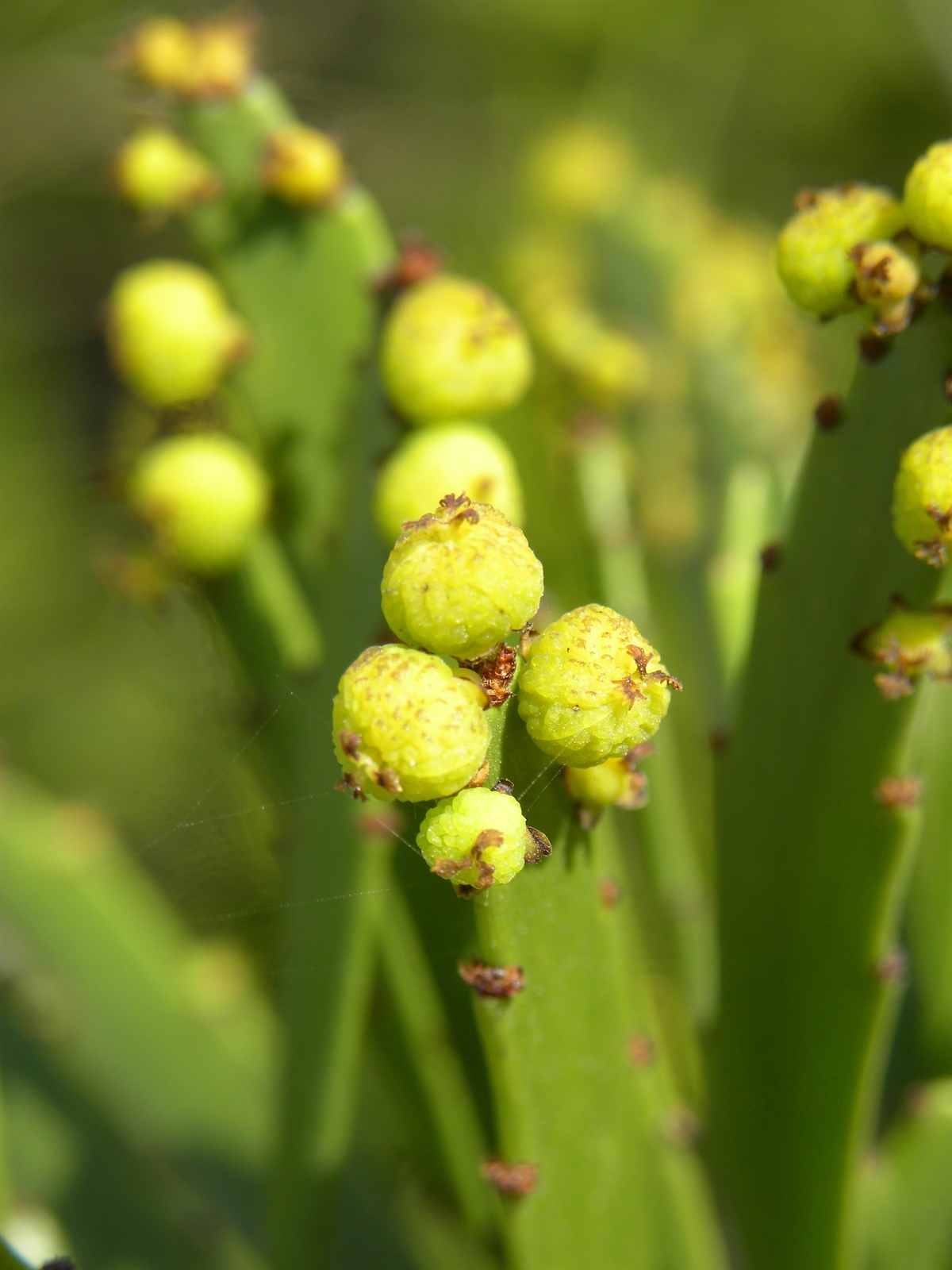Habit: Phyllanthus epiphyllanthus grows as a small to medium size shrub up to 2 m in height. There are no leaves and the branches are modified into phyllodia (photosynthetic leaf like branches). The phyllodia are arranged distichously and are lanceolate to oblanceolate with a curved shape with a serrate/notched margin.
Phyllanthus epiphyllanthus is monoecious with clusters of flowers arising from the serration/notches of the phyllodia. There are 5 or 6 sepals in the calyx that are unfused and yellow to red. There is no corolla. In staminate flowers there is a staminal column with glands at its base and no ovary. In carpellate flowers the ovary is superior with 3 locules each with 2 ovules and no stamens. The fruit is a 3-lobed capsule that turns brown at maturity and is covered with small projections/swellings
Habitat: Phyllanthus epiphyllanthus grows in open rocky areas and in Dry Broadleaf Evergreen Formation-Forest/Shrublands (coppice/shrubland).
Distribution: Phyllanthus epiphyllanthus occurs on all islands in the Lucayan Archipelago and throughout the entire Caribbean region.
Medicinal/Cultural/Economic usage: Phyllanthus epiphyllanthus is used medicinally in the Lucayan Archipelago to treat colds/fevers, coughing, dermatological issues, headaches, hemorrhaging, stomach pains, sore throats, mouth sores, tooth aches as well as general therapeutic teas. The phyllodia are also boiled to produce a tonic that can be used to stop vomiting.



